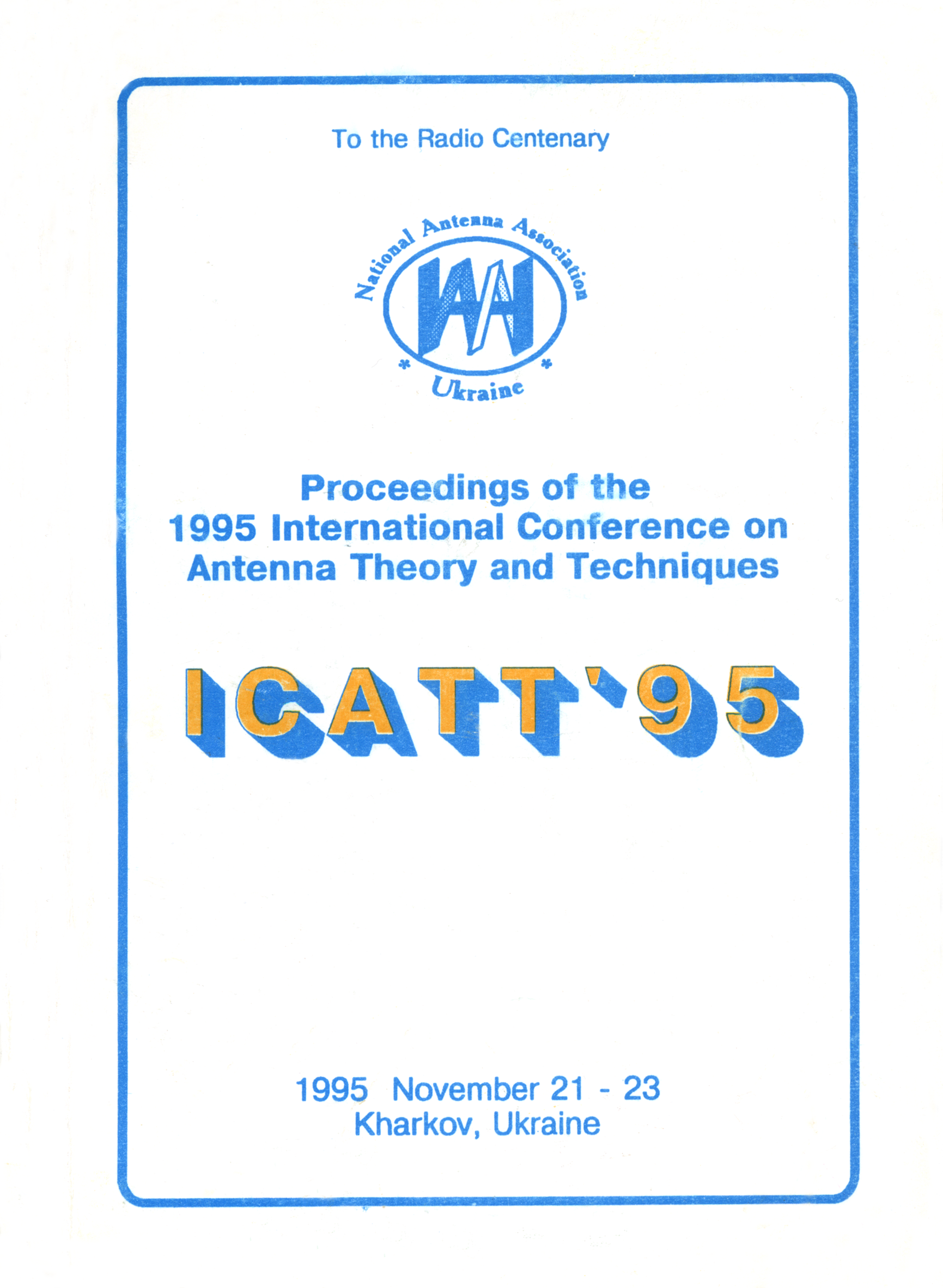Linear monopole antennas for the radiation of non-sinusoidal video pulse signals
DOI:
https://doi.org/10.1109/ICATT.1995.1234115Abstract
The issues of super wide-band non-sinusoidal signal radiation in the form of video pulses of radio wave field, of nanosecond duration and without the carrier frequency, are discussed. Factors which cause the urgency of studying the problem of radiation and reception of such signals, and promising directions of using such radiating systems in the subsurface sensing of soil, detection of targets in the sector of small position angles above the earth, and other radar and communication applications are mentioned.
New designs of linear monopole antennas for radiating non-sinusoidal signals are proposed. In one of the designs for the radiation of nanosecond video pulses of radio wave field, it is proposed to use a relatively long wire oscillator, the ends of which are connected to coaxial feed lines, and two screens, one of which is metallic and placed perpendicular to the oscillator, and the other one is parallel to the oscillator and is made of radio-absorbing material. The oscillator’s length is considerably greater than the light velocity c multiplied by the duration t of the transmitted video pulse. In such oscillator the non-sinusoidal current traveling wave is excited and the radiation is directed almost along the oscillator’s axis. This antenna enables one to narrow the linear monopole radiator beam to 10° and to improve considerably the directional properties of antenna.
In another design a short end-fed oscillator is used, the length of which is smaller than ct. It is proposed to install such an oscillator in parallel to a screen made of the wire mesh, at the distance from the screen d«ct, and to install the screen made of absorbing material behind the wire screen. Parameters of the wire mesh are chosen in such a way that the screen is almost non-reflective in the normal direction, but reflects radio waves in other directions. Here, the reflected radio waves partially suppress the field of direct radio waves, that improves directional properties of linear monopole radiator. Such a design enables one to increase the power density in the normal direction in three times.
The proposed antennas can be used as radiating elements of linear monopole antenna arrays for the transmission and reception of non-sinusoidal signals of sequential radars.
